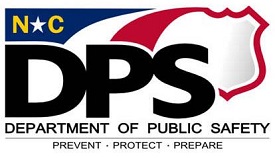
Special to Iredell Free News
RALEIGH — On Thursday, October 21, millions of people across the globe, including more than 250,000 school children have pledged to participate in the world’s largest earthquake drill. In this part of our nation it’s known as the Great Southeast Shakeout, and more than 1.5 million people across the Southeast are expected to participate. This includes nearly 300,000 North Carolinians.
While earthquakes are not as common in North Carolina as other hazards, the state has experienced 23 damaging earthquakes since 1735. A lot of smaller quakes would go unnoticed if not for instrumentation to detect them.
So far this year, numerous smaller earthquakes have been felt across North Carolina, including a 2.7-magnitude earthquake near Morganton on August 17 that resulted in light shaking across portions of the Foothills. More than 1,100 people reported feeling it to the USGS website, but there were no reports of damage. A year before, on August 9, 2020, the state experienced its strongest earthquake in almost 100 years. The 5.1-magnitude earthquake, along with several aftershocks, resulted in more than 575 reports of damage to houses and commercial buildings in Alleghany County and surrounding communities.
This year also marks the 10th anniversary of the August 2011 earthquake in Mineral, Va., considered to be the United States’ most widely felt earthquake. It was felt across North Carolina and much of the East Coast. Damages were estimated to be in the range of $200 million to $300 million, including two schools in central Virginia that suffered significant damage and needed to be replaced.
Any individual, family, organization, school, agency or business can register for the event. However, even if you or your group haven’t registered you can still practice the “Drop, Cover, and Hold On” drill, the recommended action for people to take during an earthquake.
DROP – Get down on the floor when shaking starts before the quake drops you.
COVER – Take cover under a sturdy desk, table or other furniture. If you cannot find something to get under, crouch against an inside wall. Keep your head and neck safe by covering them with your arms. Stay away from windows, hanging objects, mirrors or anything that might fall.
HOLD ON – Hold on to a desk, table or piece of furniture. Be ready to move with it during the quake.
These simple steps allow you to safely get down before you’re thrown to the ground, provide protection from falling or flying items, and increase your chances of surviving a building collapse. If you become trapped, stay calm and tap on hard or metal parts of the structure to try and attract attention.
By identifying places to shelter safely in your home or workplace and by practicing going to those places, you increase your likelihood of surviving an earthquake.
LEARN MORE
Visit https://www.shakeout.org/southeast/register/, where you can register, find fact sheets, drill manuals, drill broadcast recordings, flyers, videos and other materials that make it easy for your group to participate in the drill and be prepared.
You can find a lot of useful information on the Center for Disease Control and Prevention (CDC) website about what you should do before, during and after an earthquake at https://www.cdc.gov/disasters/earthquakes/index.html
For those with impaired mobility more information can be found on the CDC website and at https://www.earthquakecountry.org/disability/



